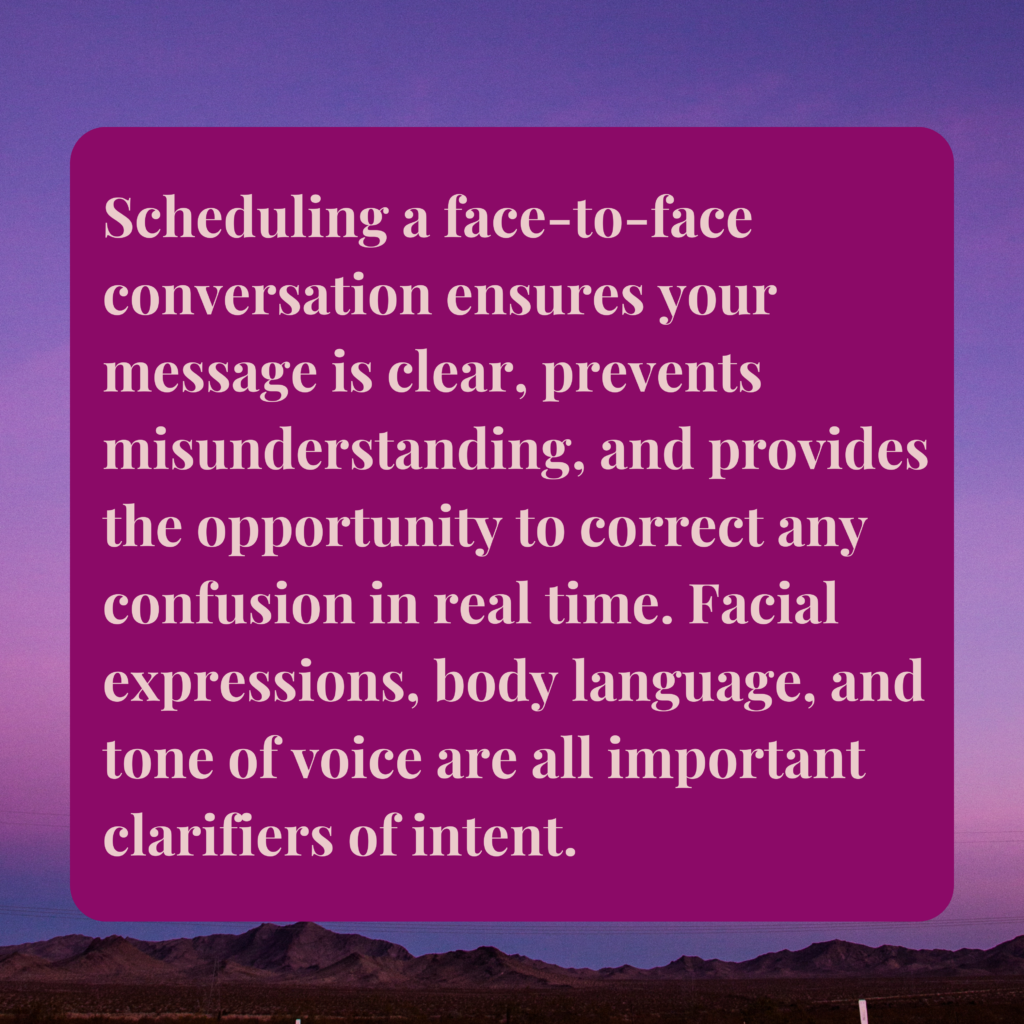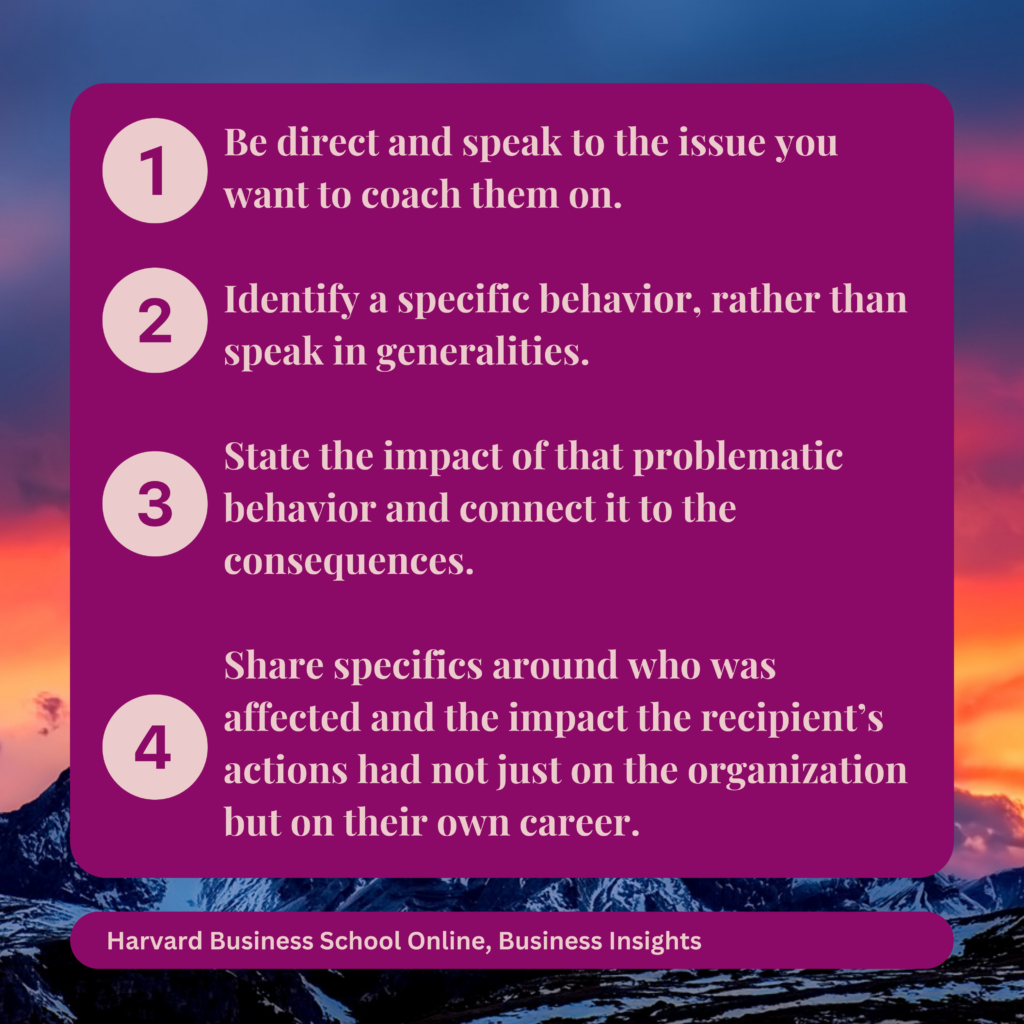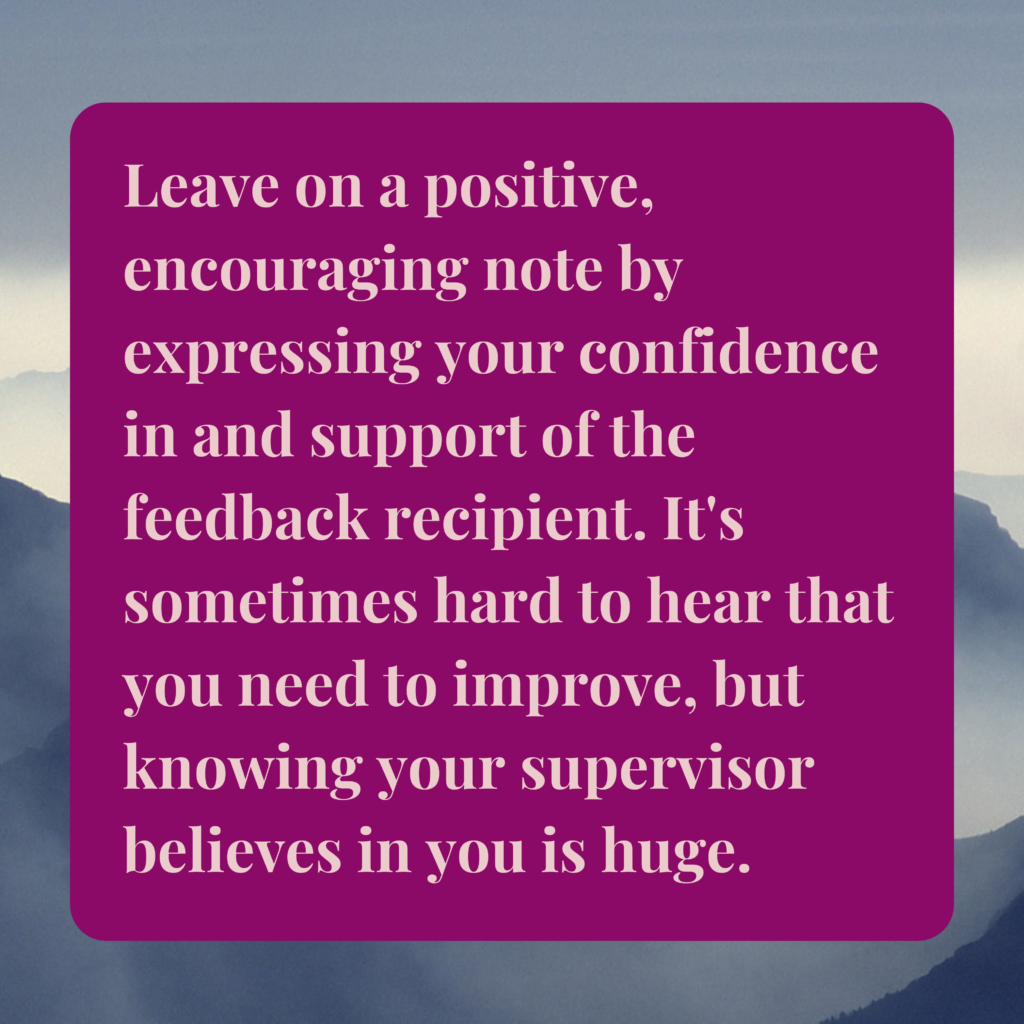Feedback is essential for improvement, regardless of age, profession, or skill level. But many in leadership avoid giving constructive feedback or simply focus on the positive. Why is that? There’s no doubt that giving feedback can sometimes make for a difficult or uncomfortable conversation, depending on what needs to be addressed. But as a leader, if you’ve built relationships with staff based on trust, respect, and empathy, there is nothing to fear in giving or receiving constructive criticism or feedback, as long as it’s truly constructive; but this means everyone on the team must be on the same page with the definition and purpose of feedback and learn how to both give and receive it.
Feedback helps individuals and the organization as a whole improve and grow. In fact, in my opinion, one of the most caring things that can be done by a leader or peer is to offer honest, constructive feedback! When an organization’s culture promotes telling the truth with kindness, everyone can assume good intentions. However, the method of delivery and the content of the feedback is still important to ensure the message is well-received.
What Is Constructive Feedback?
Feedback isn’t the same thing as praise or criticism, and there are many ways in which feedback has been categorized and defined. As far as constructive feedback goes, this is a conversation during which work-related weaknesses or behaviors are discussed with a peer or employee for the purpose of growth, improvement, and positive change. Constructive feedback can be given between peers, from an employee to a supervisor, or from a supervisor to an employee. But how in the world do you deliver constructive feedback in a positive, helpful way? Let’s take a look at a few tips.
1. Schedule a face-to-face conversation.

So many things can be misconstrued in writing! We can’t see facial expressions, hear a tone of voice, or read body language through written text. Phone calls offer us verbal expression and tone of voice, but they still leave out facial expression and body language. This means written and phone feedback can potentially come across differently than intended. Plan to deliver and discuss constructive feedback in person rather than sending an email, written message, text message, or calling on the phone. This will ensure you’re intent is clear, and you also have the opportunity to correct any misunderstanding in real-time.
2. Be clear, specific, and compassionate.

Harvard Business School Online‘s Business Insights suggests the following:
- Be direct and speak to the issue you want to coach them on.
- Identify a specific behavior, rather than speak in generalities.
- State the impact of that problematic behavior and connect it to the consequences.
- Share specifics around who was affected and the impact the recipient’s actions had not just on the organization but on their own career.
“The more clear and specific you are, the less room there is for the feedback recipient to misinterpret your advice,” they shared. And showing compassion for the person you’re speaking to, as well as to those who may have been affected or impacted, is crucial. This will take some intentional planning prior to the meeting. As a school leader, before I’d meet with teachers for constructive feedback, I would create a short outline, type out what I wanted to say for each point, and read over it a few times. This helped prepare me for the conversation and, sometimes, calmed my nerves!
3. Ask questions and listen carefully.

Speaking of two-way conversations, it’s important for constructive feedback conversations to be collaborative and include the recipient. No one likes a lecture! Try not to make assumptions about employees’ behaviors or why they are doing something. Ask them questions and assume good intentions. Then, the conversation becomes a dialogue where they share their thoughts, ideas, and feelings, and you can add to them or redirect accordingly.
The reasons behind certain behaviors might just surprise you, and their answers might lead to something (or someone) else that needs to be addressed. It also might reveal that the employee needs support in some way. Not making assumptions and asking questions to dig deeper into the ”why” leaves room for the individual to actually share what’s going on. Then you can ask, “What are some potential solutions?” etc. Now you’re collaborating with the individual in their own constructive feedback by encouraging their self-awareness, ownership, and involvement.
4. Discuss next steps.

Once you’ve discussed the constructive feedback and brainstormed ways to improve, talk about the plan for how to get from point A to point B. Identifying and addressing what isn’t working or what needs to change and discussing potential solutions is necessary. But it’s also essential to lay out a plan of action for implementing the solution, define roles in the process, and clarify the expected outcome. How exactly will the improvement be observed or measured? Will the employee be doing check-ins with you on this? Will they be working with a coach for a period of time? When the meeting is over, what’s next for you, and what’s next for the employee?
5. Express confidence in the recipient.

This is so important. Reiterating your belief in the capabilities of and the ability of the employee to improve is vital and can go a long way. This encouragement and confidence can truly lift an individual up. Leaving with your constructive feedback, support, and faith in their ability to improve and grow is powerful. What can this look like?
One Brief Example
Person #1: “I’ve noticed that you’ve frequently been late to your recess duties, and several of your colleagues have had to stay late and miss part of their break to cover until you arrive. I really want you to have great relationships with colleagues and for your students to get their much-needed recess time. What’s going on?”
Person #2: “Well, I’ve been struggling with restroom times before recess, and it’s making us late. It’s been difficult to get the students in and out in a timely manner, and lining up has been a challenge. I know I’ve been late, and I feel really bad about it!”
Person #1: “I understand, and thank you for letting me know what’s happening in the restrooms. Do you have any ideas for how things could run smoother?”
[Discuss ideas, brainstorm, and outline a potential solution together]
Person #1: “Great! Ok, so it seems you have some new restroom protocols that could work. Do you want to give them a try starting next Monday, and we can check in on Friday to see how it’s going?”
Person #2: “Yes, that sounds good!”
Person #1: “Ok, let’s plan on that. I’ve seen you make really positive changes to how you’re managing student behavior in your reading small groups with classroom procedures and protocols. You’ve really done a great job with that. I am confident that you’ll implement a workable solution for restroom time, and I appreciate your coming to meet with me about it. I’m here to support you, so if you need anything next week while you’re starting to implement the new restroom protocols, let me know. Otherwise, I’ll set up a follow-up meeting for next Friday.”
This is just one scenario, but you can see how the person in the supervisory role was direct with the problem, the impact of the problem, and what they would like to see happening. They asked the employee a question to give the opportunity to offer insight and explain their perspective, experience, and situation. Then, both people involved discussed solutions together. The “supervisor” outlined specific next steps, expressed confidence by giving a specific example, and offered support in the process.
Initially, as a school leader having these types of conversations put a knot in my stomach! But over time and with practice, giving and receiving constructive feedback became easier. And seeing the positive outcomes and growth, both in myself and in others, made these discussions invaluable. For everyone in a school or organization to improve and grow, addressing areas for growth and improvement directly with kindness and clarity is an absolute necessity.

